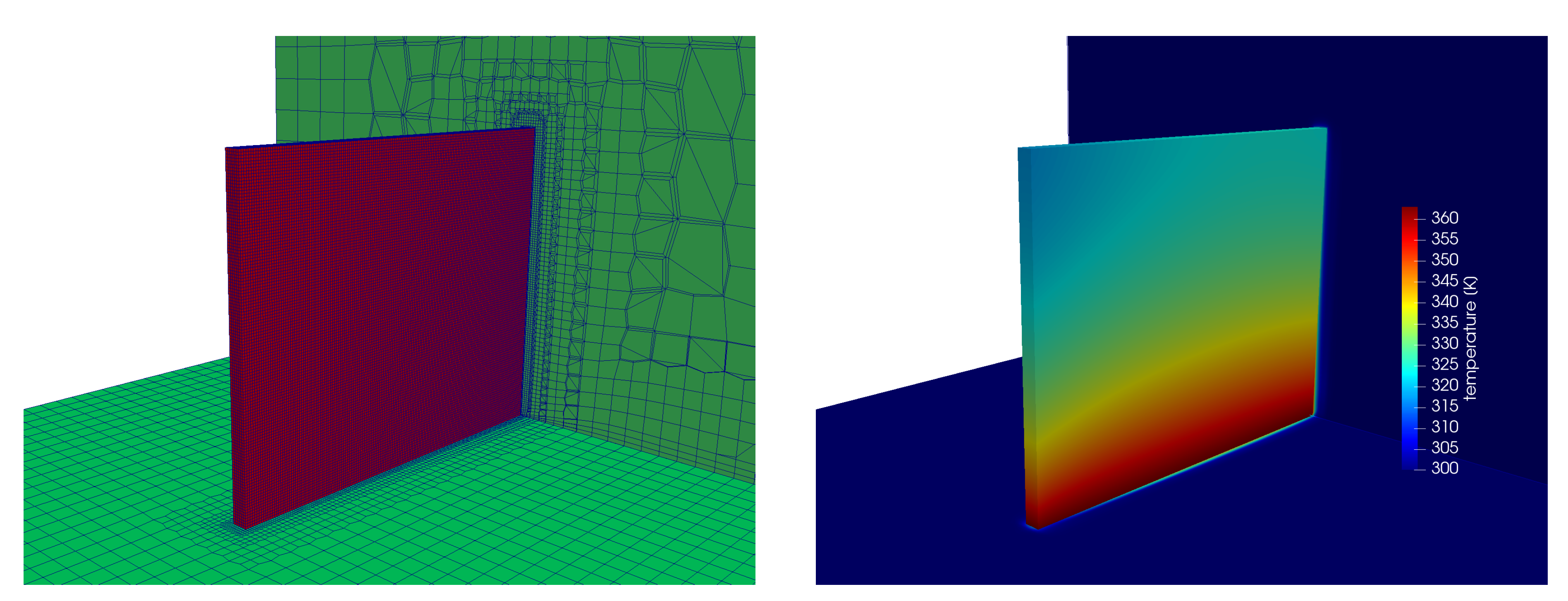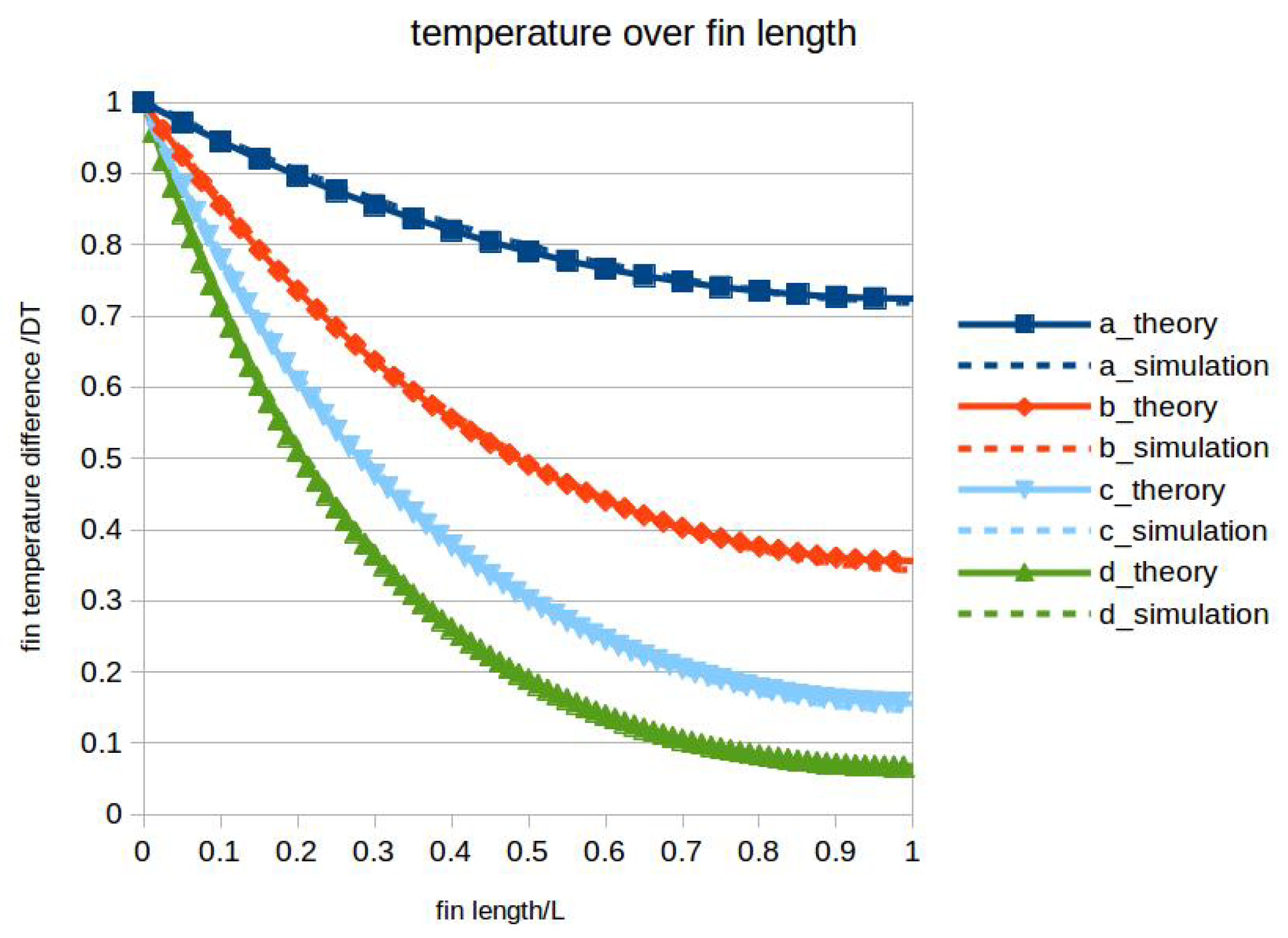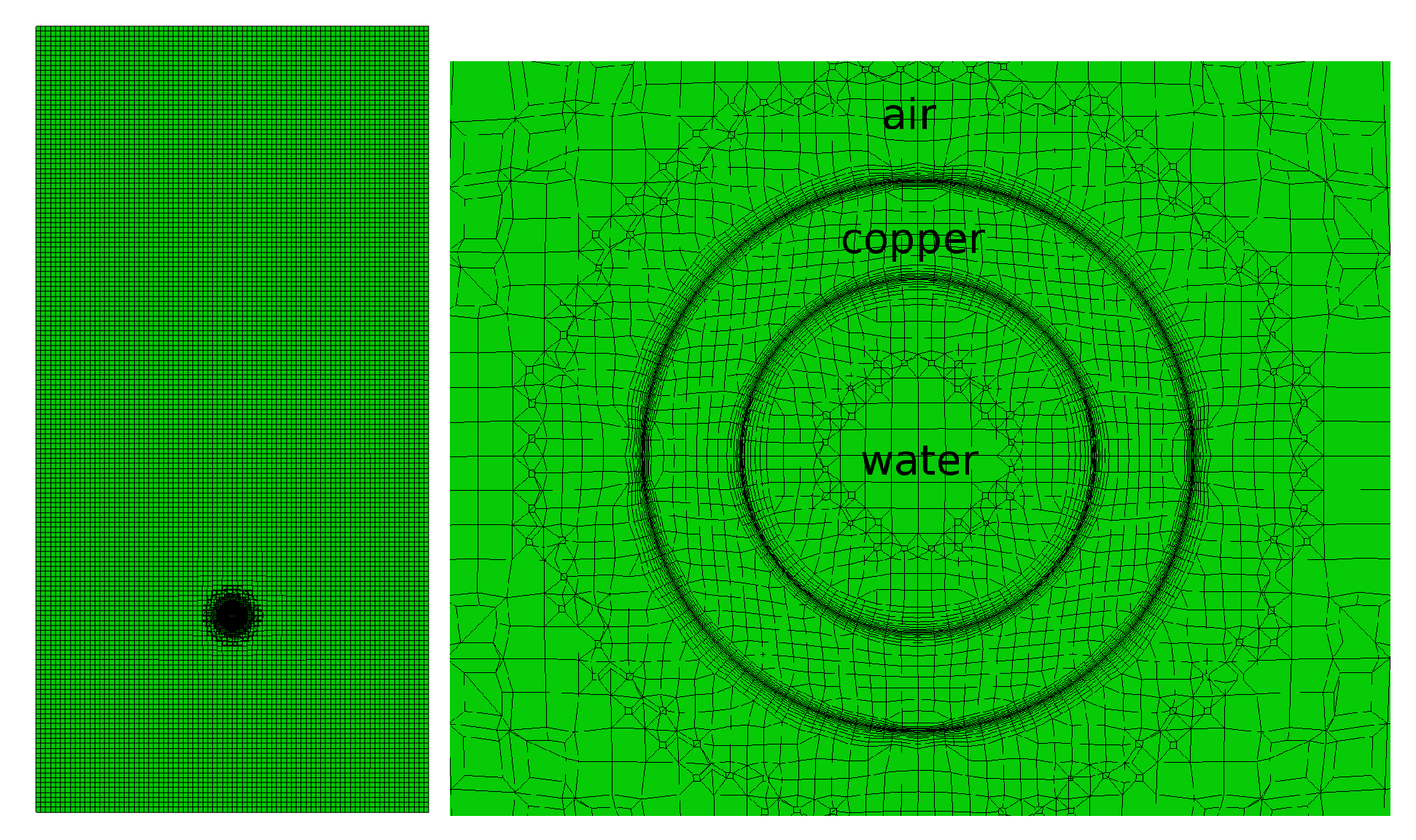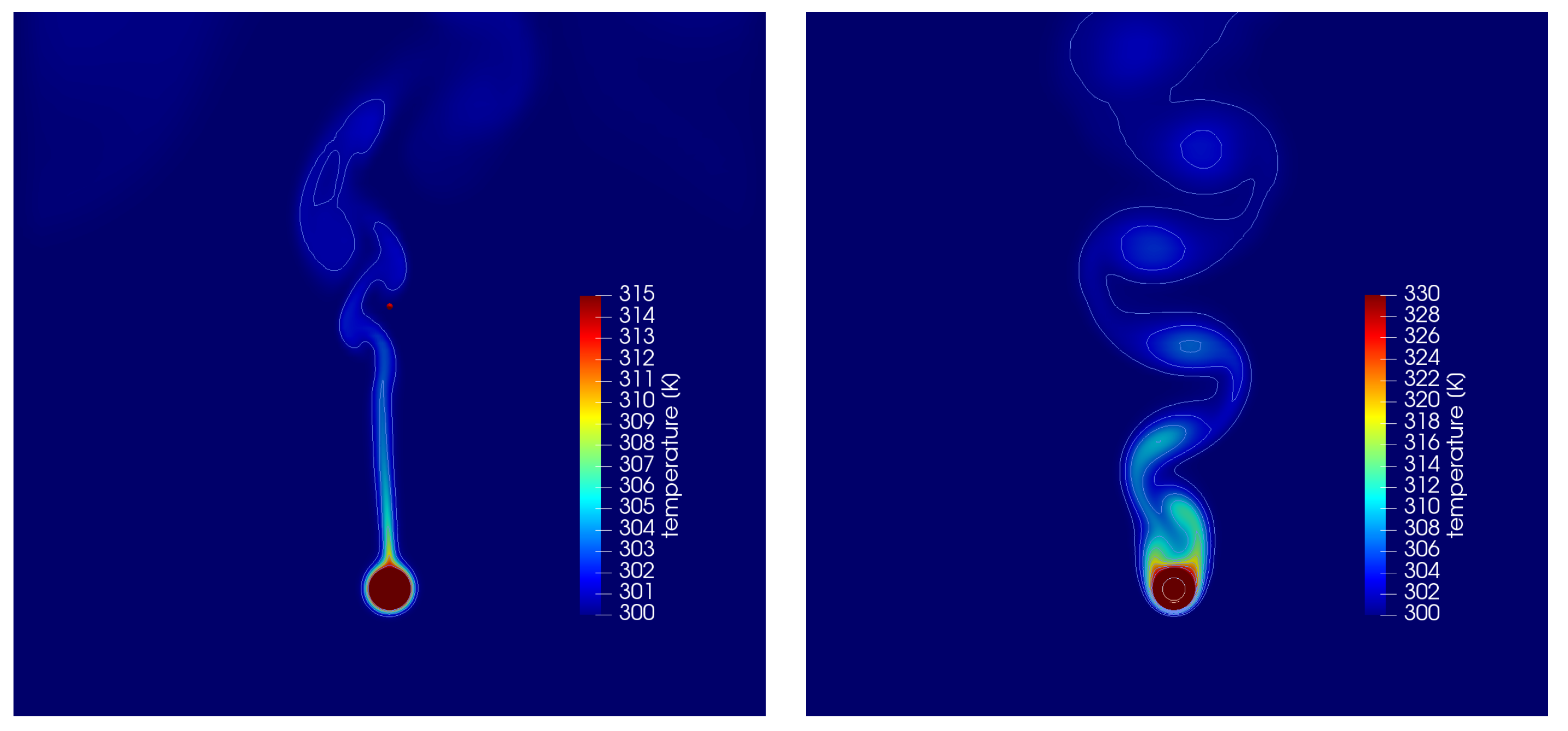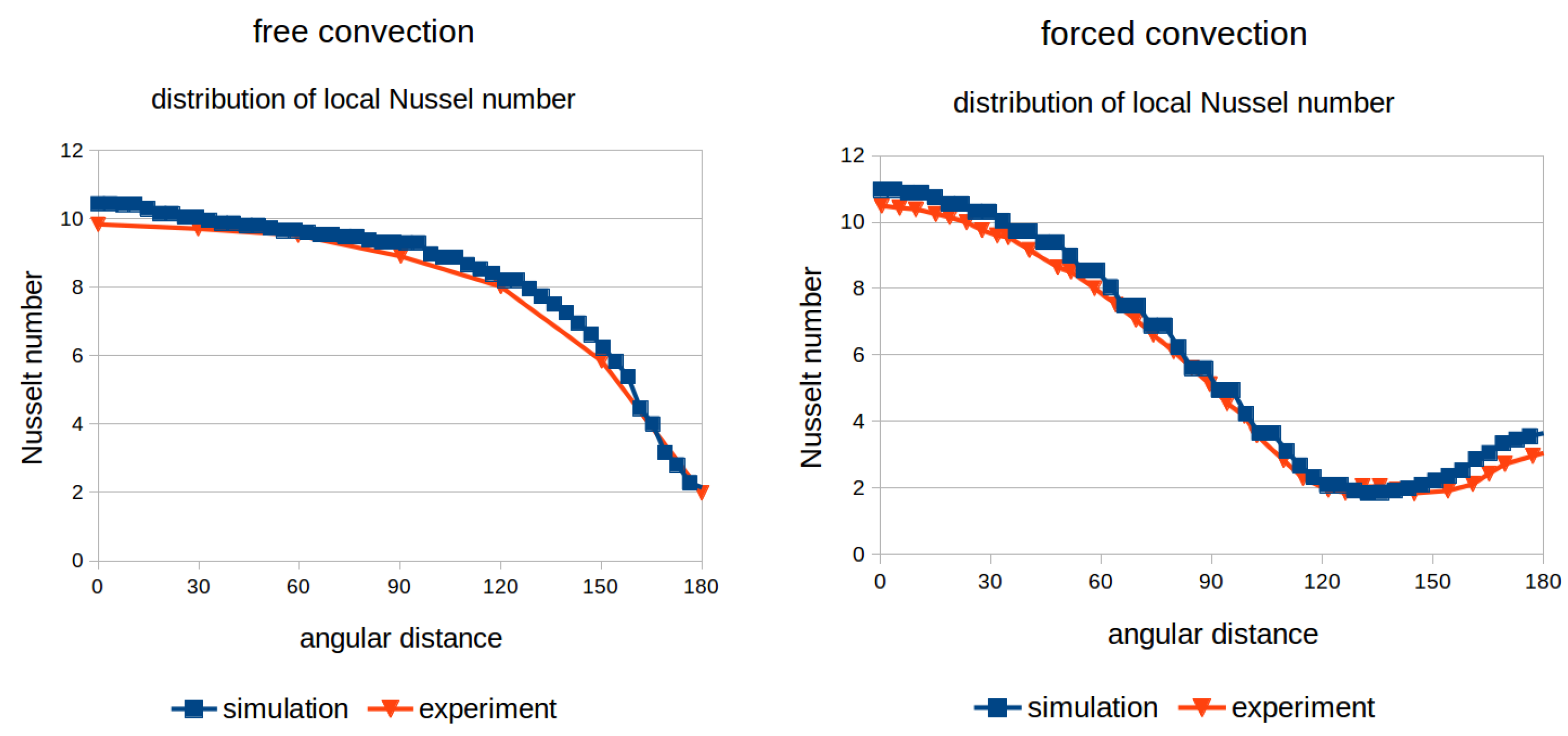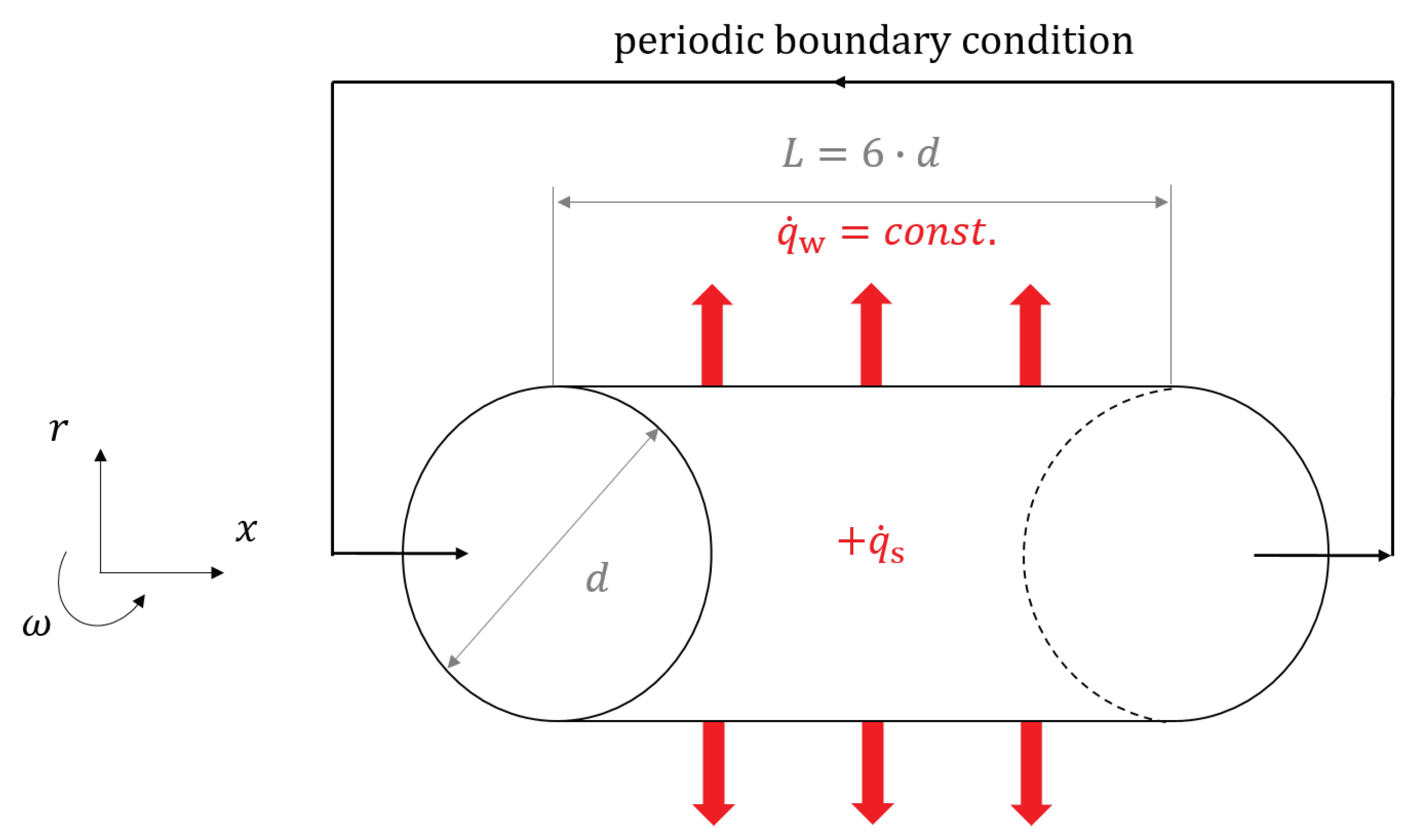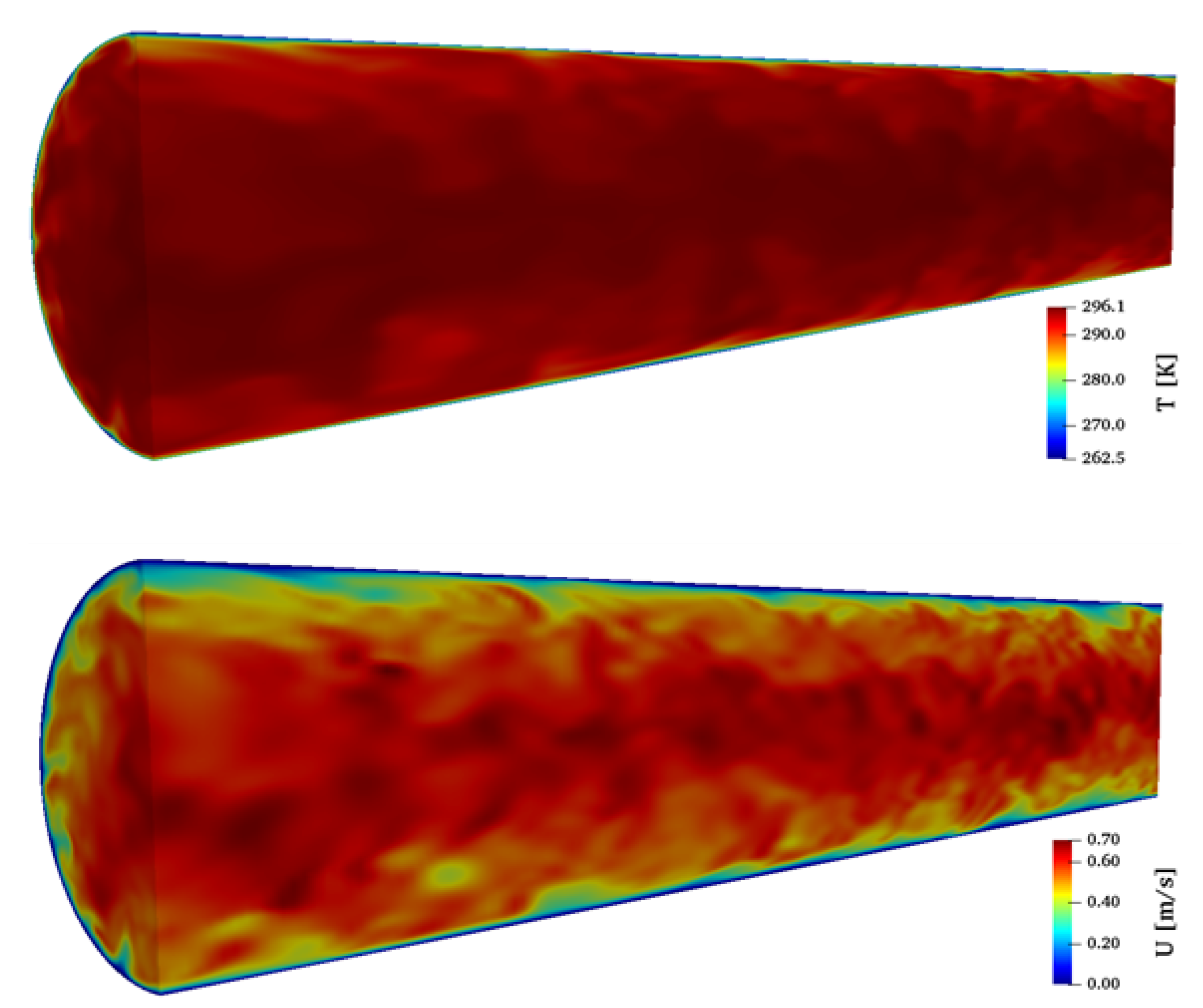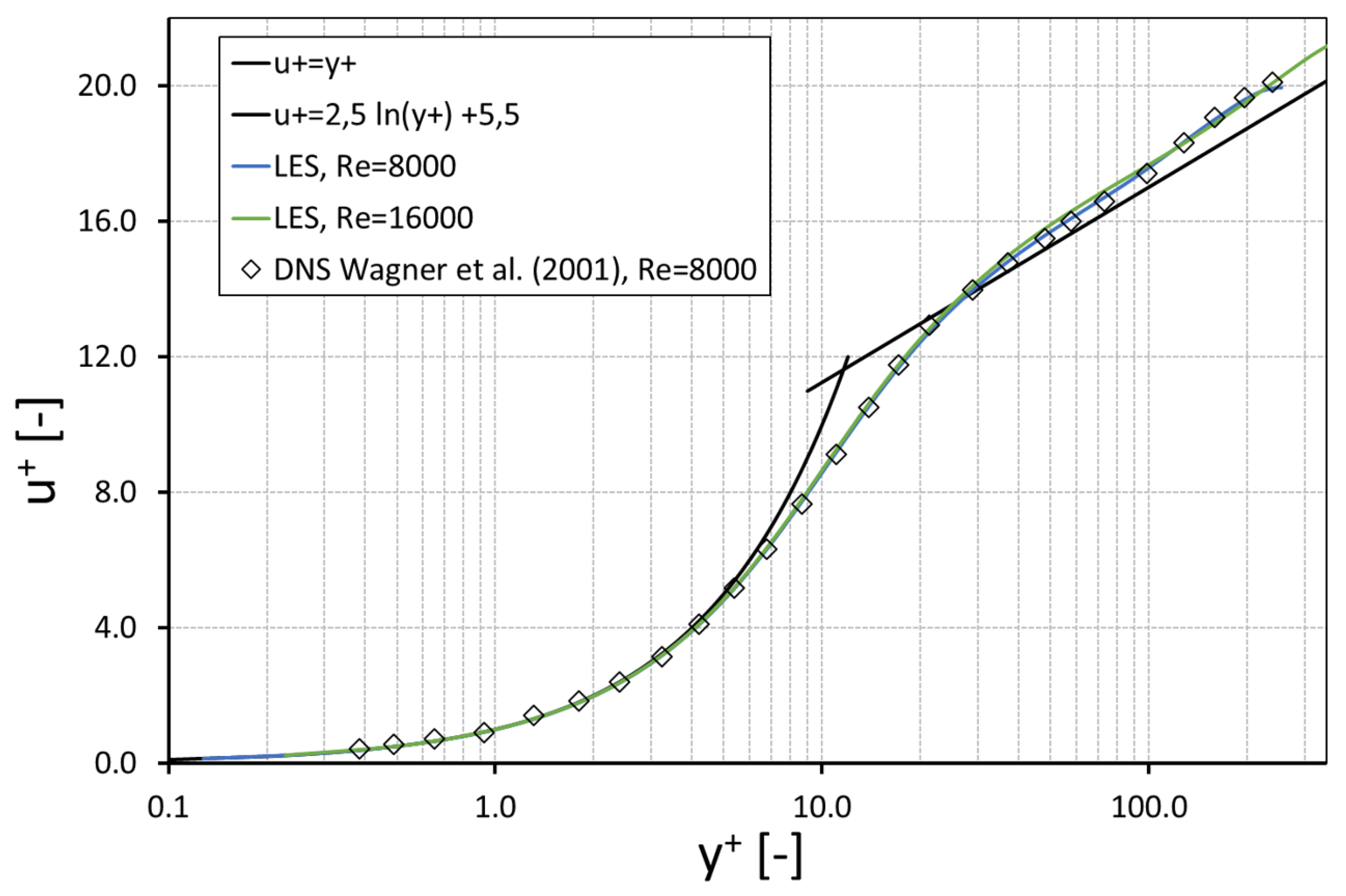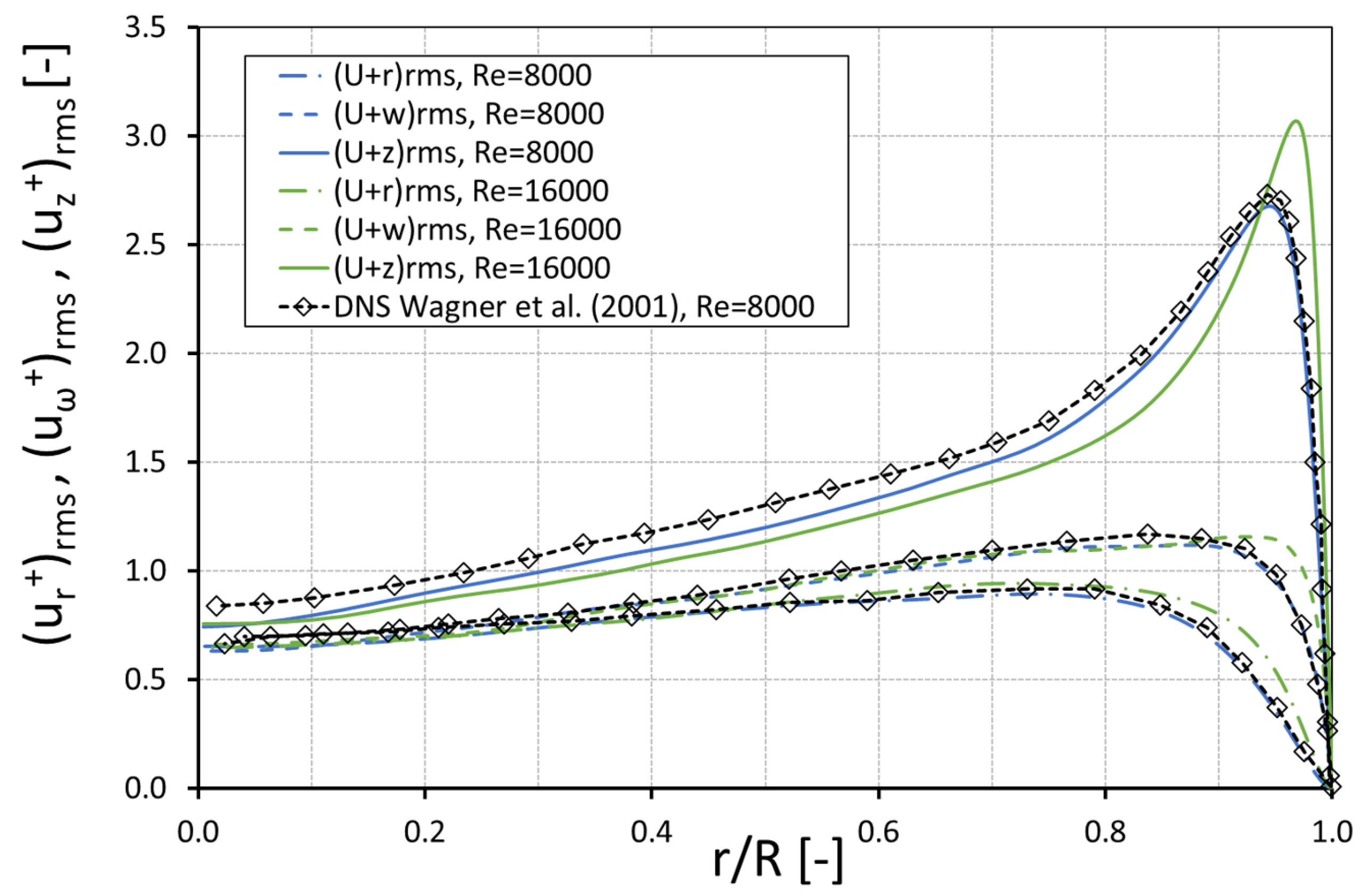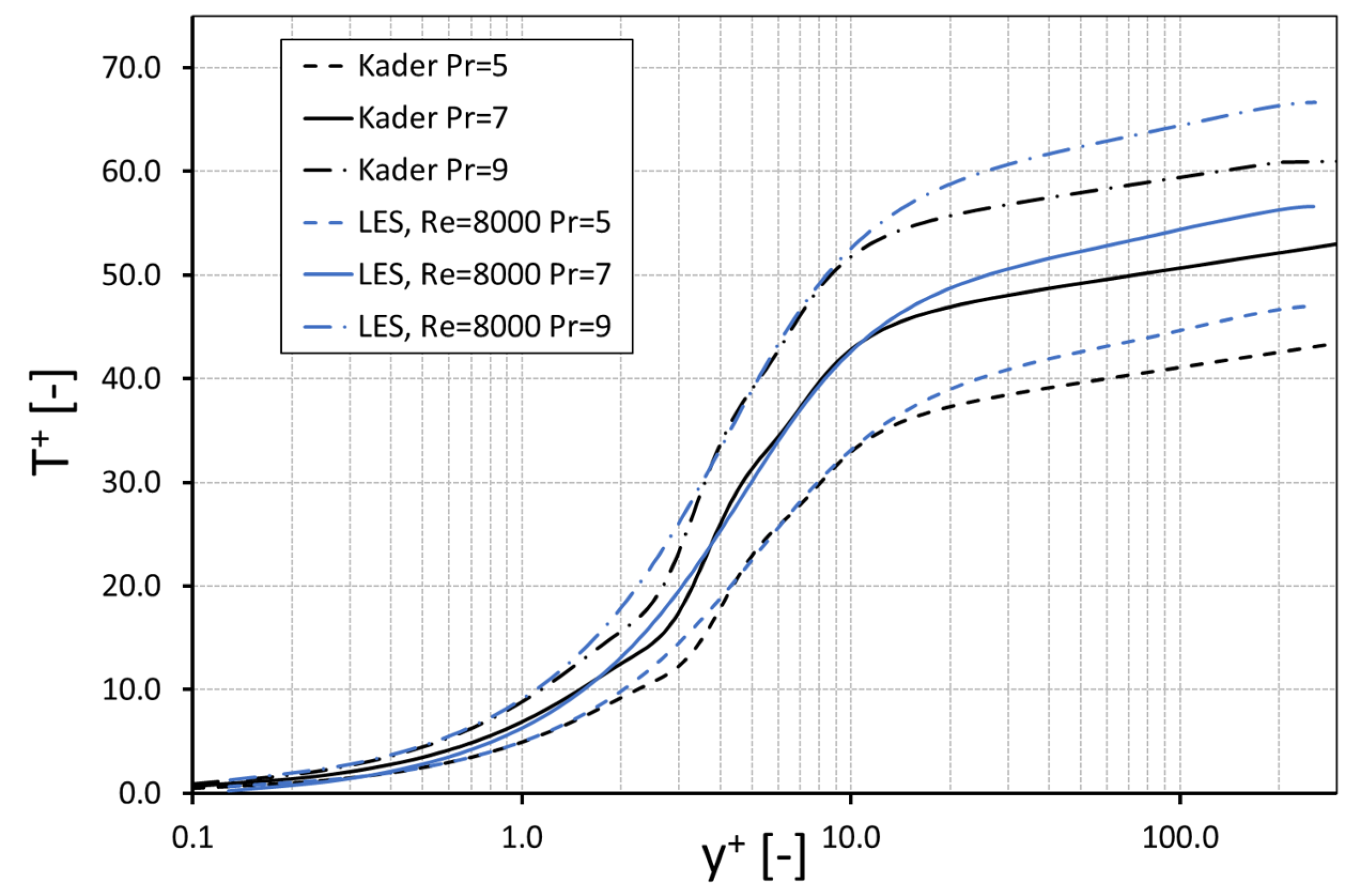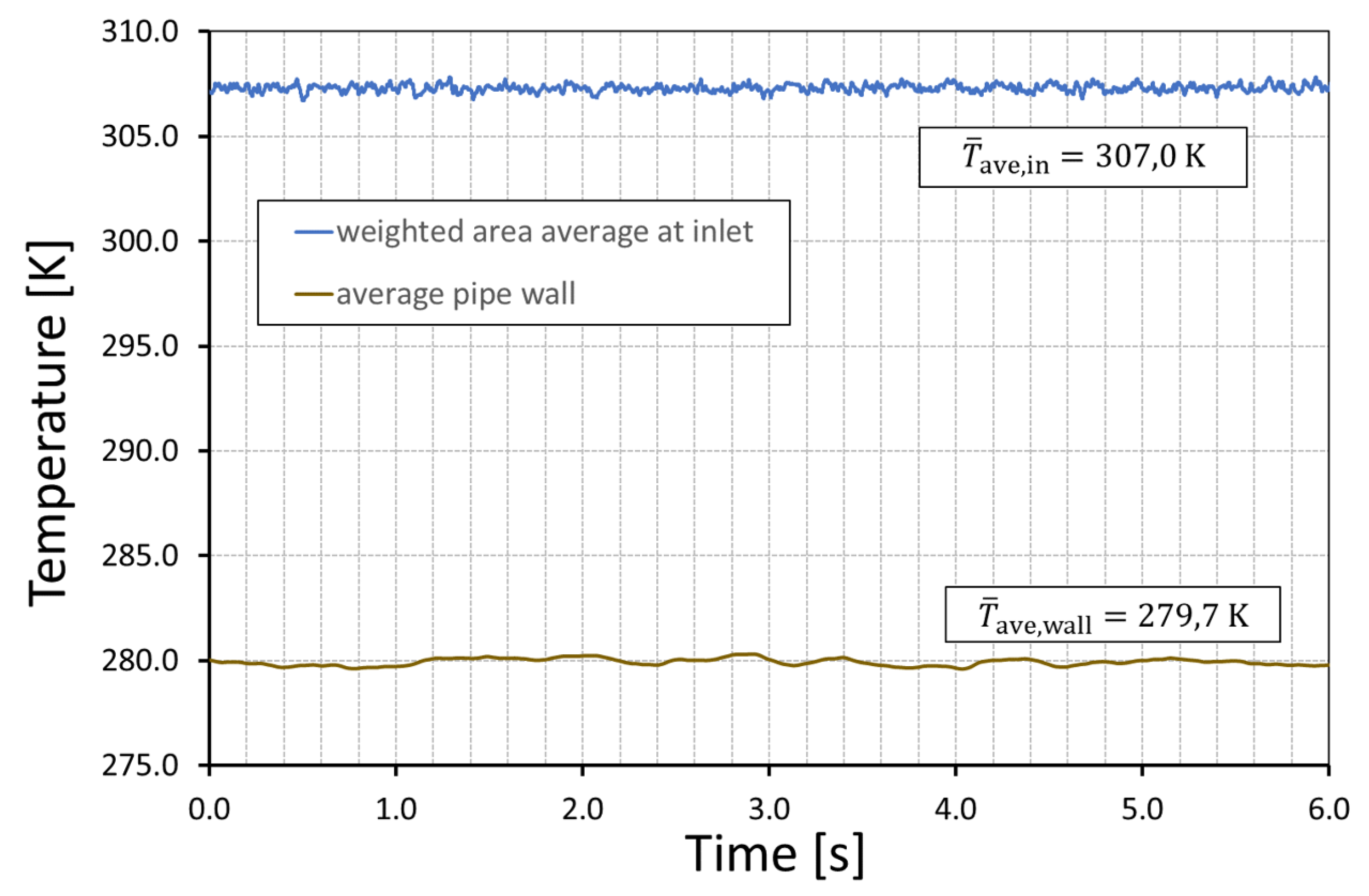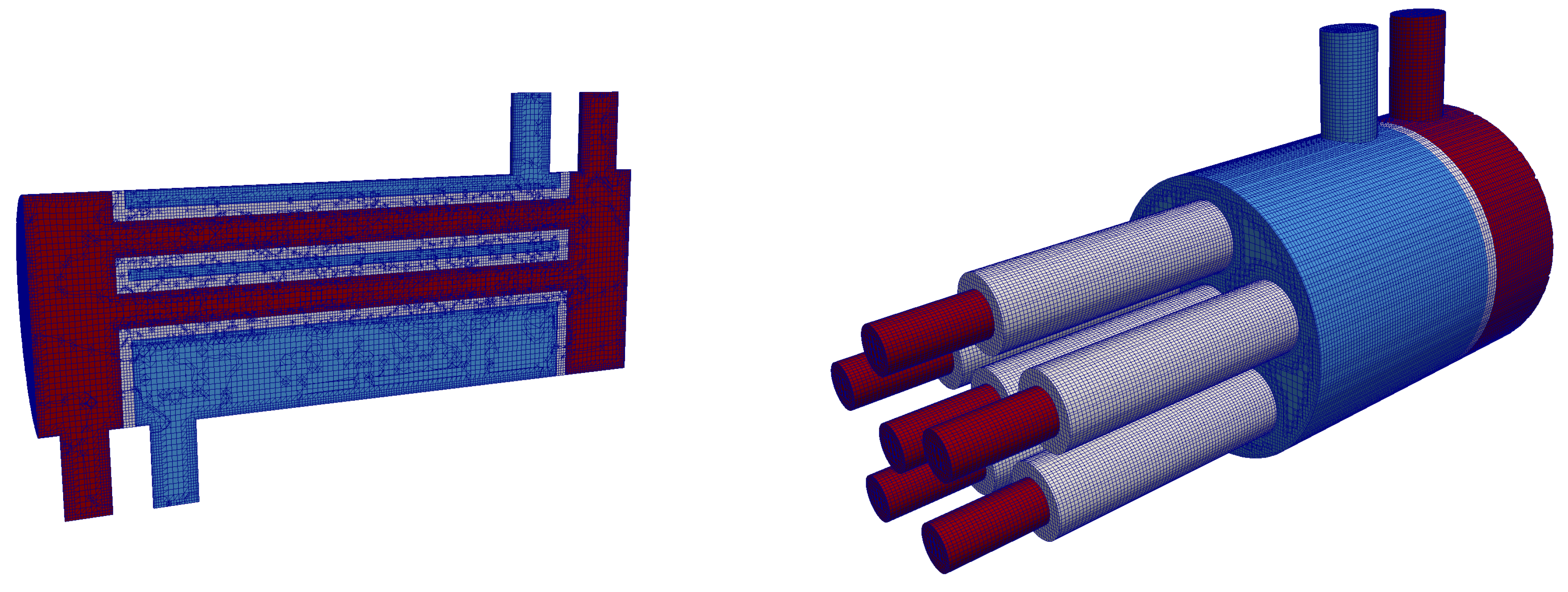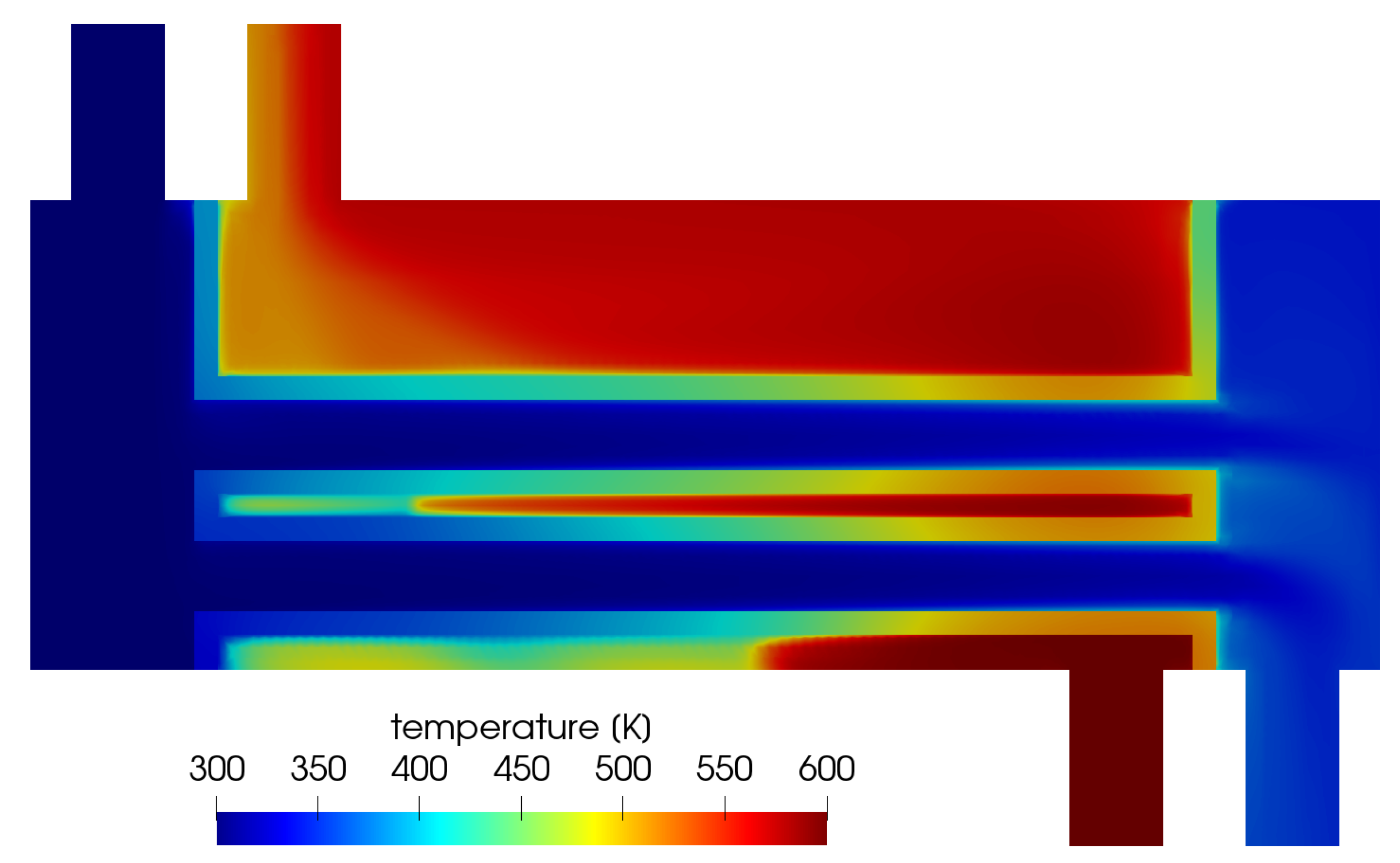1. Introduction
Designing the process equipment for power or chemical plants is still based on empiricism or precedence, i.e., knowledge accumulated from prior experience. Due to inefficient designs, traditional resources (raw materials, hardware, utilities, and energy) are not exploited effectively, which leads to high production costs, a loss of product quality, and environmental pollution. An excellent review of the impact of a lack of process understanding on reliability and energy-efficiency, as well as safety was given by Joshi et al. [
1,
2].
The reason for the persistent high level of empiricism in process design is the complexity of heat and mass transfer in the process equipment. In general, the industrial equipment is operated at turbulent flow conditions, where vortical fluid motions (eddies) at different length and time scales contribute toward mixing and the transport of momentum, heat, and mass. A consistent modeling of such transport phenomena is a must to identify the relevant process parameters and will enable improvement in the scale- up and design procedures.
In recent years, some excellent reviews are provided for CFD in heat exchangers [
3,
4]. However, commercial software is predominantly used for most referenced simulations and not a single reference to the use of OpenFOAM is found in these reviews. The reason may be found in the lack of usability of existing multi-region solvers in OpenFOAM. Multi-region approaches are required, if the convective heat transfer from one fluid through a wall into another fluid is simulated.
There are many publications on heat transfer investigations using OpenFOAM, but they are often limited to the convective heat transfer in a single fluid region [
5,
6,
7].
The published research using OpenFOAM for conjugate heat transfer simulations is often performed involving code modification, extension or re-implementation. Schremb et al. [
8] studied the heat transfer due to an impinging droplet on a flat surface. A multiphase modeling approach is implemented in combination with the conjugate heat transfer methodology. The application of these modified solvers is often limited to benchmark. There are very few publications of conjugate heat transfer simulations with OpenFOAM that are applied to complex industrial equipment like real heat exchangers. Greiciunas et al. [
9] simulate a compact plate-fin heat exchanger with serrated corrugation in cross flow orientation and compared the results with experimental data.
Very little research has been performed with the specific objective of testing and validating the conjugate heat transfer methods in OpenFOAM
® for fundamental problems. However, many researchers and users in the industry see a demand for constant validation and verification of these open-source CFD methods that are in constant development. Only for turbulent single phase flows without heat transfer several authors have published validation studies in recent years. In several publications, turbulence models in OpenFOAM
® were validated for the simulation of flows over bluff bodies [
10,
11,
12].
In the present study, a verification and validation study was performed using the open source computational fluid dynamics library OpenFOAM® version 6-dev for conjugate heat transfer problems. The test cases had a growing complexity starting from a simple steady state problem over unsteady heat transfer to more realistic engineering applications. The applications were a fin effectiveness study, external convection at pipes, internal pipe heat transfer, and as a final example a simplified shell-and-tube heat exchanger. The validity of the techniques was shown for each test case by comparing the simulation results with experimental and analytical data available in the literature.
2. Physical Modeling
Today, heat transfer problems are often analyzed using a conjugate, coupled, or adjoint formulation. These three equivalent terms correspond to the problems containing two or more subdomains with phenomena described by different types of differential equations [
13]. If the heat transfer in a solid body and a neighboring fluid is considered, the first is described by the Laplace equation and the latter by the Navier–Stokes equations. Thus, heat transfer through solid and fluid regions can always be considered as a conjugate problem.
The solution methodology used here was implemented in OpenFOAM
® (Open Source Field Operation and Manipulation). OpenFOAM
® is an object-oriented software library programmed in C++ and designed for the numerical solution of differential equations from continuum mechanics, as demonstrated by Jasak and Weller [
14]. OpenFOAM
® is distributed with a variety of predesigned solvers. Usually, the finite volume method (FVM) is applied. Here, the edition OF6-dev was chosen with the solvers
chtMultiRegionFoam and
buoyantPimpleFoam. For the fluid regions, the solution algorithm in both solvers was identical. In the following, the governing equations are briefly described.
The physical modeling of flows with heat transfer is based on conservation laws for mass, momentum, and energy, as shown by Anderson [
15]. The continuity equation for an unsteady flow of a compressible fluid can be formulated as
with the nabla-operator
, the density
and the velocity field
.
The conservation of momentum is formulated as
where
p is the static pressure field and
g is the gravitational acceleration. The effective viscosity
is the sum of the molecular and turbulent viscosity. The rate of strain (deformation) tensor
is defined as
.
The conservation of energy in the fluid is defined in terms of the specific enthalpy
h as
where
is the specific turbulent kinetic energy. The effective thermal diffusivity
is the sum of laminar and turbulent thermal diffusivities
where
is the thermal conductivity,
is the specific heat at constant pressure,
is the (turbulent) Prandtl number and
is the (turbulent) kinematic viscosity. The equations for the hydrodynamics and thermodynamics of the fluid flow (Equations (1)–(4)) are extended to include energy transport due to transient heat conduction within the solid wall according to
The turbulent transport parameters in Equations (1)–(4) require a turbulence closure with a corresponding modeling technique.
In three of the later four reference cases, the k-Omega-SST model was chosen. This includes two additional transport equations to represent turbulent properties of the flow: the transport of kinetic energy
k and the scale of the turbulence
. The extended SST (shear stress transport) model is known for its good behavior in adverse pressure gradients and separating flows [
16].
Recently, tensor-based models are applied more often. A thorough discussion is not possible here, but recent improvement has been made in RANS-development such as the v2-f-model [
17,
18] or the scale-adaptive model [
19]. In recent years, the effort for the development of RANS models has been strongly reduced due to lack of general success as well as the rapidly increasing computational resources that allow the application of more costly methods. Therefore, in one of the following test cases, the LES technique was applied, i.e., only the large-scale vortices that contain most of the turbulent kinetic energy were directly resolved and all smaller scale vortices were modeled [
20,
21]. Similarly, the accuracy compared to RANS was increased substantially and at the same time the numerical effort compared to DNS was reduced up to a level that makes this approach interesting for the industry. A detailed overview about the LES techniques is given in [
22].
These techniques have been demonstrated to perform well for technically relevant turbulent flows [
23,
24,
25]. In LES, a filter function with a characteristic filter width
is applied to Equations (1)–(3), so that the field variables are decomposed into a resolved and a non-resolved part. Thus, the velocity vector becomes
. The expression for the effective viscosity is reformulated to
, i.e., the sum of molecular and apparent viscosity of the subgrid scales. Following the Boussinesq approximation, the subgrid scale viscosity is then modeled as
with
and
as the kinetic energy of the subgrid scales. The Smagorinsky model [
20] utilizes a simple diffusion model for this
with
and
.
In the current work, the so-called WALE (Wall-Adapting Local Eddy-viscosity) model was applied [
26]. The subgrid scale viscosity was calculated in the same way as shown above, but the calculation of the subgrid scale kinetic energy was slightly different:
with
and
. Thus, this model takes into account the rotation of the flow field for the calculation of
and it can be applied without additional damping for
in the near wall region.

